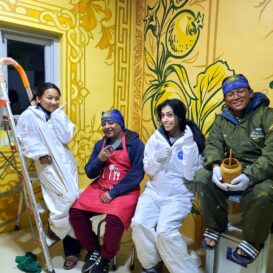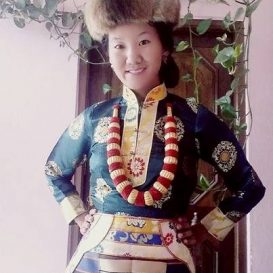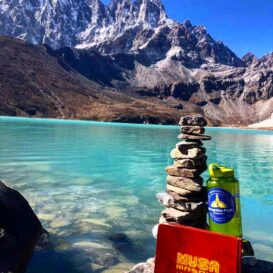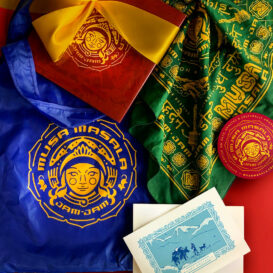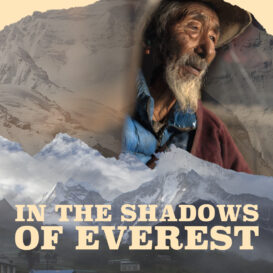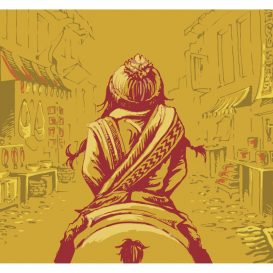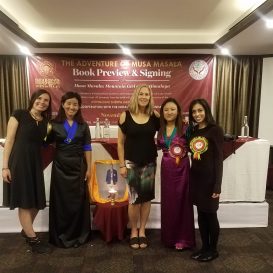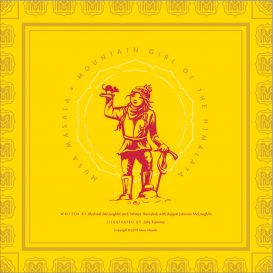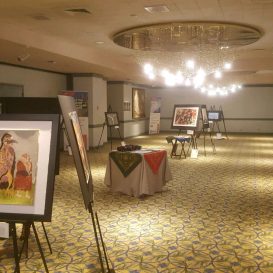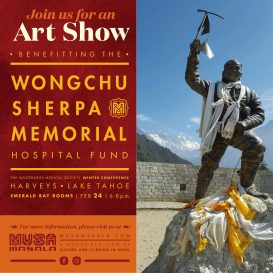In the spirit of true adventure travel, Musa is happy to bring you Geoff Browne, filmmaker and photographer. We interviewed Geoff about his ‘drop it all and go style’ that led to his acclaimed documentary, Call it Karma, a story about a Tibetan monk’s journey to save his monastery. We included the links to the trailer as well as the film at the end of the interview. Thanks, Geoff, for taking the time to chat with us and for sharing this great story. We also look forward to hearing more about your project in Nigeria.Tell us about the film ‘Call it Karma.” How did it come about?
*****
Tell us about the film, Call it Karma. How did it come about?
My adventures in Tibet started in 1999. I woke up one morning a bit hung over and thought, I need to really kick-start something new. There was an adventure travel show that weekend. I decided that though I didn’t have money to pay for the entrance fee, I’d go down there anyway and try to sneak in. I had traveled quite a bit before doing [documentary] work and took photos along the way. I also had written some articles for an adventure travel magazine.
Anyway, I went down to the show and snuck in past security. Once inside, I quickly took off my jacket in case security saw me, and then I turned to a table to get myself immersed in a conversation… [and] look as though I had been there a while. The person I spoke to had photos on the wall of China and Tibet. We started speaking,and she said she was going to Tibet the next Friday and wished she had hired a photographer and writer to join the group. I told her my bags were already packed and at the door.
So that next Friday, I was on a plane to China and Tibet for the first time. It was exhilarating. I loved Tibet, but I was with a tour group, and I remember seeing the nomads coming into Lhasa Prostrating along the way, the monks and all the fantastic people. I was blown away. Had never seen anything like it. I really wanted to experience that life and get to know the nomads and the monks, to venture where they had come from.
As I was leaving Tibet, I knew my experience was just beginning. When I got back to Vancouver, I looked through the phone book for Tibetan names. I was just going to call them to see if we could get together.
But one day, I was downtown [in] Vancouver sending an email to a friend I had met in Tibet, and I looked up and a Monk walked past the window. I was shocked. I jumped up and ran outside… He was far down the block, so I sprinted to him. “Tashi delek,” I said. He turned around and replied with [one of] those bright Tibetan smiles, “Tashi delek.”
We ended up meeting for tea one day and he showed me shots of his family and the village he came from. My eyes widened. That was precisely where I wanted to go and experience that life. His story was amazing and I decided to make a documentary about it, retracing his journey. I’d just have to find the money and the means, but it was a top priority.
Tibet is not an easy place to get to. Did you have difficulties filming or getting cooperation?
Well, I just went and made it happen. I wasn’t going to make the film political in any way. This was a story of the persistence of one amazing man crossing the Himalayas by foot on a mission from his master, to raise money for the monastery and the people there. So there were no issues.
Tell us about a couple of events that really stood out while filming.
There are so many stories. I returned to the Rinpoches village three times. One time was alone without any translators or assistants. I just charged my camera with a gas generator. I stayed in his family’s house. It was February. I wanted to get footage of snow and the harsh struggles the people had there. Sadly when I arrived all the snow had melted.
Anyway, I filmed the monk, well he is a Rinpoche… I shot him in Vancouver and asked him to say in Tibetan all the scenes I needed. I wanted to do dramatic recreations from his life. So rather than having me tell him one thing at a time, he had me tell him all the scenes I needed and then he spoke to the camera. It seemed great…
But then, when I got to the village to play the tape back with all the requests…it was 30 minutes of him speaking Tibetan. I needed to shoot a recreation of 100 monks walking him out of the village as they did the day he left, but days were passing and I never knew when we would shoot that scene, among others.
So I just had to act stuff out and hope they got it. I also had him say on-camera that they are not to ‘look in the camera’ when I was filming them. But I had no idea where that was on the tape, so it became kind of useless to a degree.
One day we got in a jeep and just drove into the mountains… It was exhausting, just never knowing what was happening. After a few hours, we pulled up to a village. No white people had ever been there. No road access. People traveled by horse. There was a monastery and a hundred monks sitting outside. I was excited. Today was the day for that scene, but then I didn’t know if they knew they would have to walk somewhere and pretend they were saying goodbye to the Rinpoche. Well it all turned out, they just got up and started walking and I started shooting. The scene turned out well.
Other times, we rode horseback into the mountains, just me and the monks. It was amazing, passing hundreds of yaks and nomads stepping out of their tents to watch us go by. It really felt like the Old West: smoke coming out of the shelters, me on a pony. I hummed Bob Dylan as we rode. I could really go on…
Do you have plans to go back?
I’d love to go back and film the changes in the village. I’ve seen photos and its grown a lot and there are electricity and TVs and yadda yadda..all the things we wish they didn’t have, because it ruins our ‘romantic’ vision of what it should be. But everyone has the right to evolve, to make life easier and so on. I guess we just hope with of all that, they are as happy or happier.
Where does the project stand at the present?
It was finished in 2004. It was translated into five languages and played on TV in Canada for five years. It went to numerous [documentary] film festivals. Its only 45 minutes long. I should have made it feature-length. But no regrets. It did well, was very well received, raised a lot of money for the monastery and got me hired as DP for a two-time Oscar-winning documentary director. Plus, it helped me get my Green Card to live in LA, where I have always wanted to be.
I was just in China last month and had dinner with producer, Shan Tam, and her partner, Michael Parker, who really made the film happen. The other producers of the film were Jack Silberman, Telefilm and Maureen Levitt.
What else are you up to?
Since that film, Call it Karma, a lot has happened. I ended up being a DP for Nat Geo Drugs, Inc. and so many other projects and docs. However, my goal really has always been to do a fiction feature film and to find a story that would be unique and worthy of telling.
I have been doing script doctor jobs and many screenwriting assignments. I just returned from a promo directing job that took me to remote villages in China, Taiwan, Japan and India. If anything, shooting and directing Call it Karma alone certainly made me an expert at putting together a film anywhere on the planet.
Watch the trailer and and behind the scenes clips from Call it Karma here or the full film here. Please check out this beautiful work.
See Geoff’s amazing Instagram at @geoffbrowne.









